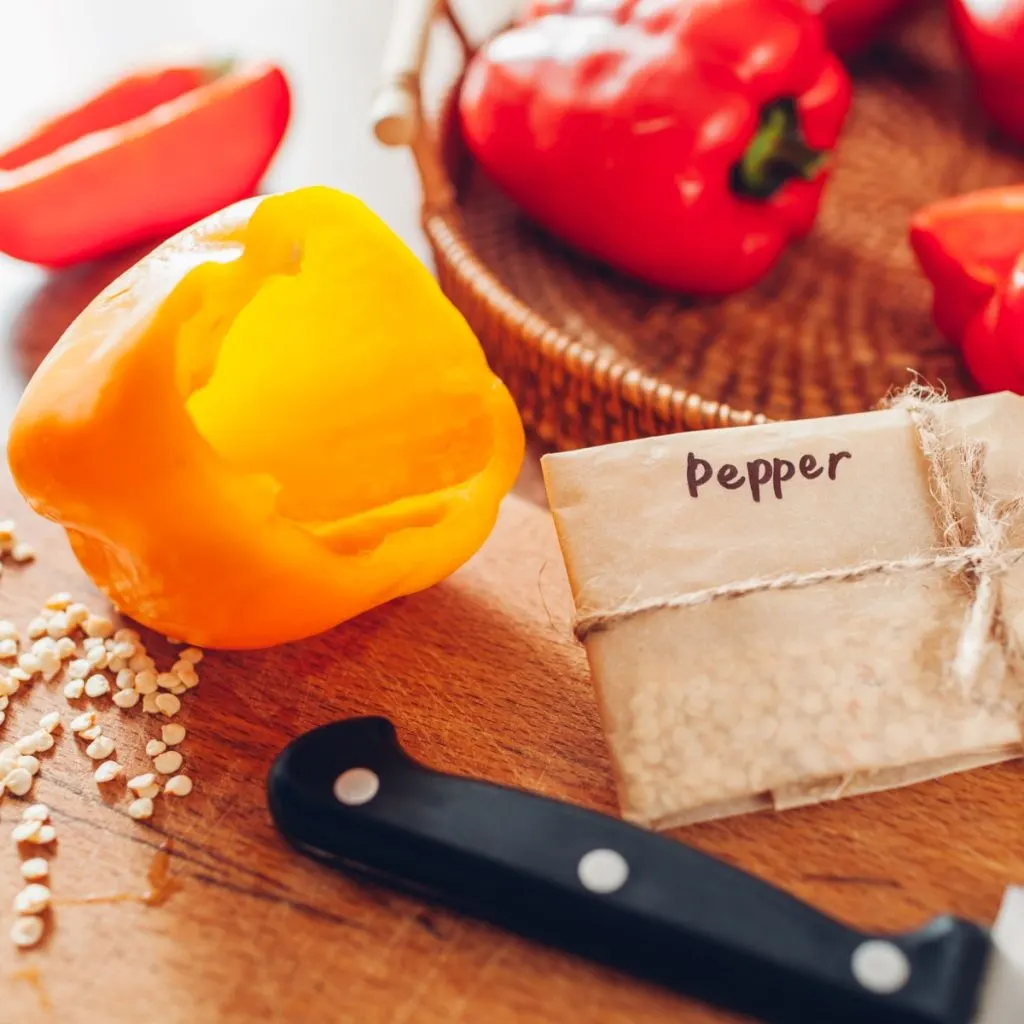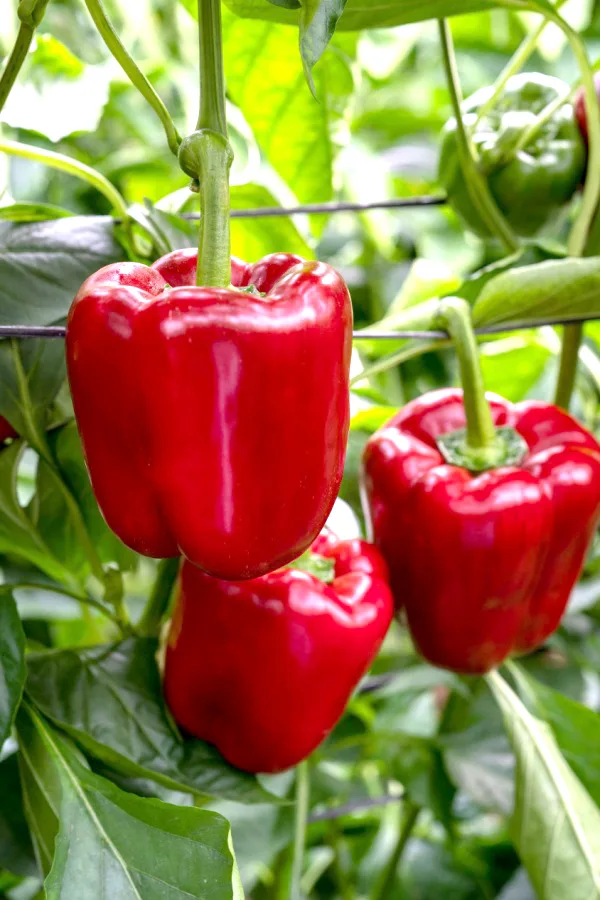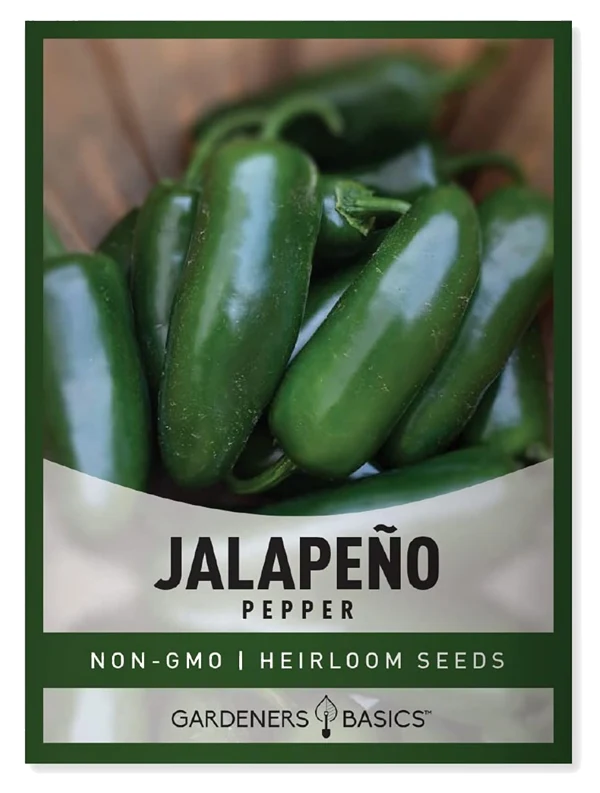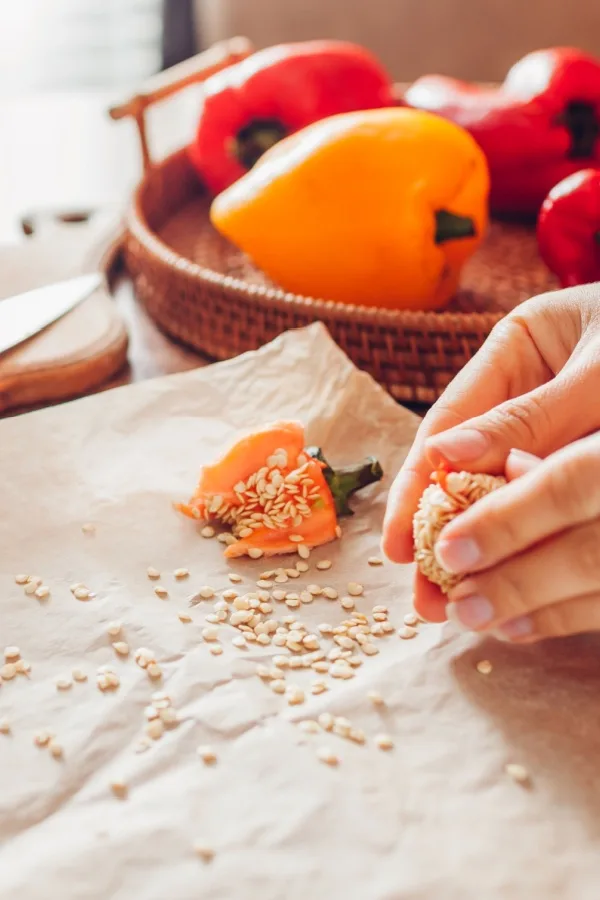Did you know that you easily save the seeds from your favorite pepper plants to grow again next year? Not only is it really simple to do, but it’s a great way to save money and help the plants you grow next year to be stronger and more productive than ever!
From the cost of seeds constantly on the rise to the ever growing price of purchasing transplants, it doesn’t take long before your garden budget is out the window each spring. But there are more advantages to saving seeds than just saving money.
By growing your own pepper plants from your own seed, it allows you the opportunity to select seeds from your best peppers. And that means you give yourself the best chance to grow healthy plants that produce great peppers and a big harvest.

While saving pepper seeds is one of the easiest gardening practices, there are still a few things to keep in mind if you hope to end up with successful results next year. Here is a look at how to save your pepper seeds with ease – and with big success!
How To Save Pepper Seeds From Fresh Peppers!
Allow Them To Fully Ripen
With so many peppers growing in your garden, how do you know which one to save the seeds from? First, look for the healthiest, strongest plant that is also the most productive. Just because a plant is full of foliage doesn’t mean it’s the best choice. You want the best genetics to be passed on to the seeds – and that includes productivity.
It’s always best when saving seeds to wait until late summer before harvesting the seeds. At this point, the peppers plants are more mature. Because of this, the seeds also tend to be more developed.
Once you identify a few peppers to harvest the seeds from, do not pick them yet. Allow them to completely ripen on the plant. This will ensure that the seeds are as mature and developed as possible. Often, seeds saved from unripe peppers will likely not be viable.

Allow the peppers to soften a bit while still on the plant before harvesting. There might even be a few wrinkles on the pepper which is completely fine. This helps indicate that the fruit is fully mature – and so are the seeds.
Please note that while it might seem like a good idea, you should not save the seeds from store-bought peppers. Not only will you have no idea what variety the plant is, but these peppers are often sprayed with chemicals that might affect germination and growth.
Pepper Seeds You Can Save – And Some You Can’t
In general, pepper plants fall into two main categories: open-pollinated or hybrid. Which plant you are growing will make a difference in the seeds you can – or cannot save.
Open pollinated plants create what are known as “true” seeds. When planted, their seeds will turn into exact copies of the parent plant. Heirloom plants are an example of open pollinated varieties.
The seeds from open pollinated plants can be saved to successfully grow the same plants again next year. This goes for all types of plants, whether they are flowering annuals or vegetable plants. See our article “How To Save Marigold Seeds With Ease”
Hybrids, on the other hand, do not create true seeds. This is because they are created using two or more different parent plants. The seeds of the hybrids will become variations of the parent plant – or even a brand new plant altogether.

The issue with saving hybrid seeds is that you never know what variety you will get when you plant. In fact, some plants won’t even produce peppers you can harvest. Because of this, saving hybrid seeds is not recommended since it’s a gamble that most gardeners don’t want to take.
Identifying Hybrids vs Open Pollinated Varieties – How To Save Pepper Seeds From Fresh Peppers!
In order to know whether you are growing a hybrid or an open pollinated plant, you need to check the seed packet or transplant card. If it doesn’t say on the packet, there are still a few clues to look for.
The first is to look at the name. If you see the letter “F” in front of a number, then you know it’s a hybrid. For example, Gourmet F1 pepper seeds produce plants with beautiful orange sweet peppers, but their seeds wouldn’t be good for saving.
If a pepper plant or seed is listed as an “heirloom”, then you automatically know it is an open pollinated variety. Most seed companies want to promote heirloom seeds, so it normally isn’t difficult to find that information. Product Link: Gardeners Basics, Jalapeno Pepper Seeds

If you still aren’t sure but know the plant variety, a simple search online can get you the information. Unfortunately, there isn’t any way to tell which type you have just by looking at the plant itself.
Collecting The Seeds – How To Save Pepper Seeds From Fresh Peppers!
Now that you’ve identified the open pollinated plants and chosen the biggest, healthiest, and fully ripe pepper, it’s time to actually collect and save the seeds.
The first step is to remove the pepper from the plant and give it a good wash. If you are working with hot pepper plants, be sure to wear gloves. Use a sharp knife to cut off the bottom portion of the pepper. Roll the pepper gently on its side on a cutting board then shake to help dislodge the seeds.
Once most of the seeds are out, cut the pepper in half and remove any remaining seeds. Look through all the seeds and discard any that are small, damaged, or discolored.
Place the seeds in a single layer on a paper towel or a piece of parchment paper. If you are saving more than one variety, be sure to label each set of seeds. Keep seeds in a dry location that is out of direct sunlight. Every few days, move them around a bit to help ensure even drying.

The seeds may take up to a week or two to dry out completely. If the seeds snap in half easily, they are fully dry. If they are soft and only bend, allow them to dry out for a few more days. You want the seeds to be 100% dry before storing or you risk the seeds molding.
Long-Term Seed Storage – How To Save Pepper Seeds From Fresh Peppers!
Once the seeds are completely dry, place them in a paper envelope or glass container for long-term storage. Avoid using plastic or any type of container that might harbor moisture. Label the envelopes with the pepper variety and the date.
Keep the seeds in a cool, dry location. One of the best places is the back of your refrigerator, but avoid using the freezer.
Under ideal conditions, the saved pepper seeds will be viable for up to three years. However, it’s best to plant and use the seeds the following year. This will result in the best germination rates. Once spring rolls around and it’s time to plant peppers again, be sure to check out: What To Put In A Pepper Planting Hole – 3 Ingredients That Get Peppers Growing Fast!
Here’s to saving open pollinated pepper seeds to ensure you have the best genetics in your garden each year – while saving money at the same time! For more tips on saving seeds to use again next year, see: The Best Way To Store Vegetable & Flower Seeds Over Winter – How To Keep Seeds Fresh!
Simple Garden Life
Follow Our Facebook Page For Even More Great Tips! Simple Garden Life Facebook Page
Simple Garden Life is a website dedicated to keeping gardening fun, simple and enjoyable! We publish two new articles each week along with a new garden podcast episode every two weeks. This article may contain affiliate links.
